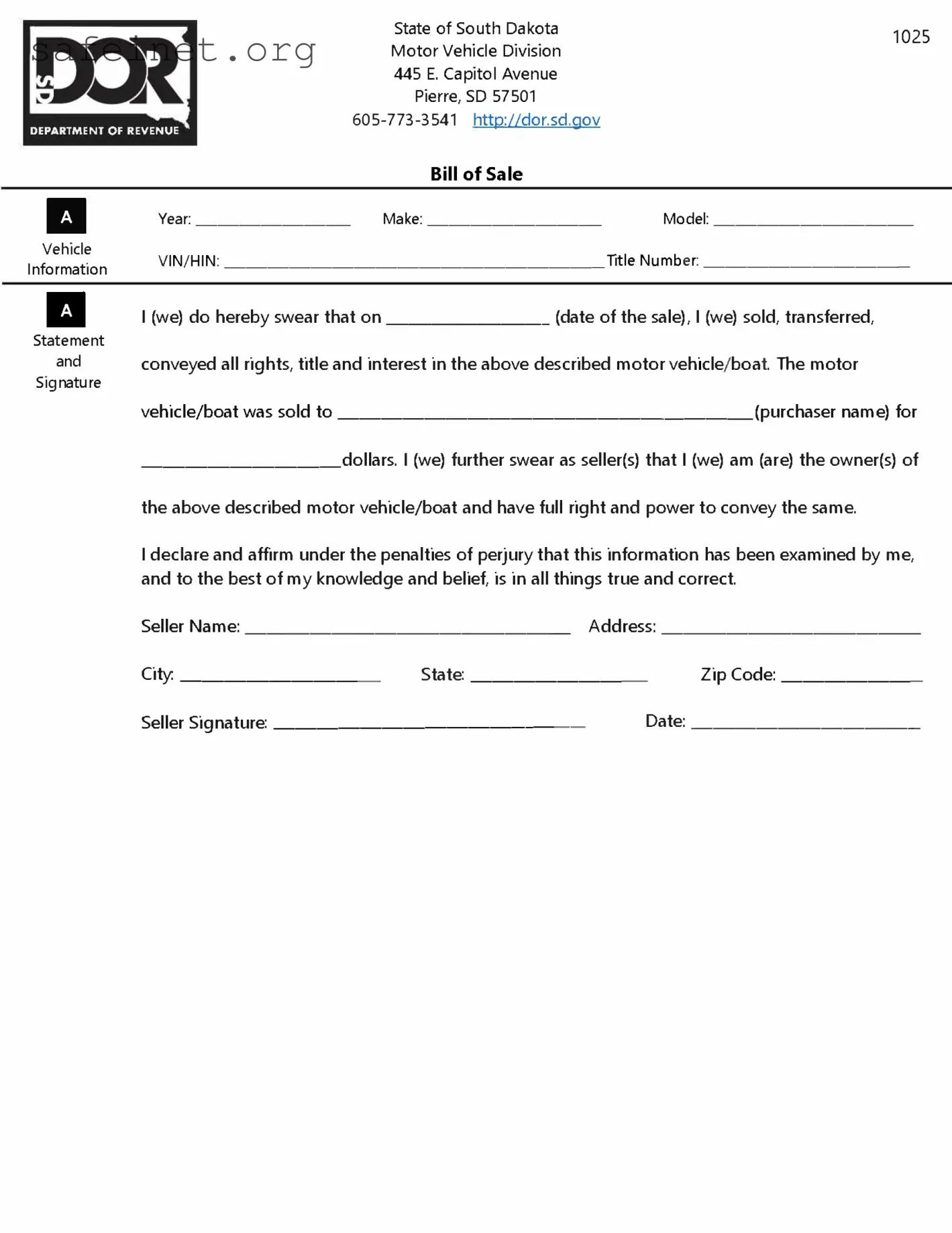The BOS 1025 form is similar to the W-2 form, which employers use to report wage and salary information of employees to the IRS. Both forms serve a critical role in accurately tracking earnings. The W-2 form provides a detailed breakdown of compensation; in comparison, the BOS 1025 collects specific data that organizations might need for operational insights. Both documents require meticulous attention to detail to ensure compliance with regulations and to facilitate accurate reporting.
Another document akin to the BOS 1025 is the 1099 form, which is utilized for reporting income earned by independent contractors and freelancers. Like the BOS 1025, the 1099 ensures that all income is properly documented for tax purposes. Both forms must reflect accurate information to avoid discrepancies in the tax reporting process, allowing for transparent financial reporting within various sectors.
The IRS Schedule C form relates closely to the BOS 1025 as well. Schedule C is used by sole proprietors to report income and expenses from their businesses. Both documents require detailed reporting to provide a clear financial picture, thus aiding in the preparation of annual tax returns. The precision in filling out both forms is fundamental to avoiding audits and ensuring compliance with tax laws.
The corporate tax return Form 1120 bears similarities with the BOS 1025 in that it is used by corporations to report income, gains, and losses. Both serve as financial statements to be reviewed by tax authorities. Clear documentation and accurate data entries are essential for both forms to fulfill legal obligations and provide a comprehensive view of the entity's financial situation.
Another document that shares characteristics with the BOS 1025 is the personal tax return Form 1040. This form is used by individuals to report their yearly income and calculate their tax obligations. Like the BOS 1025, the 1040 requires careful documentation and attention to detail to ensure that all income is accounted for and reported accurately, as discrepancies can lead to complications with tax authorities.
The payroll report is another document similar to the BOS 1025. Payroll reports summarize the wages, tips, and other compensation paid to employees, along with withholdings for various taxes. Both documents are crucial for employers to ensure they are meeting their payroll obligations while also accounting for income accurately for tax purposes.
The Form 941, also known as the Employer's Quarterly Federal Tax Return, is analogous to the BOS 1025 as it covers information on wages paid and taxes withheld. Employers use both forms to capture financial details pertinent to tax compliance. Filing both documents accurately is essential for maintaining good standing with the IRS and verifying employment tax liabilities.
The Form 990, a nonprofit annual information return, is comparable to the BOS 1025 in the sense that it reports the financial activities of organizations. Both forms aim to provide transparency regarding earnings and expenditures, supporting accurate assessments of fiscal health. They highlight the importance of detailed record-keeping to fulfill reporting obligations.
Lastly, the IRS Form 4562, which is used to claim depreciation and amortization, shares similarities with the BOS 1025. Both documents require detailed documentation around financial reporting. Accurate completion of either form can have substantial consequences on tax liabilities, emphasizing the necessity for precise data management and compliance with tax regulations.

